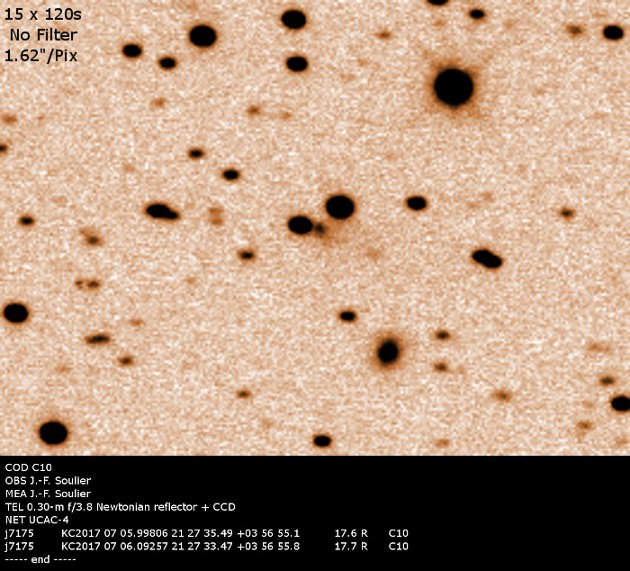

Special Objects
Asteroid : 2008 GO 98 (457175) j7175 : comet ?
Cometary appearance for the asteroid 457175, without filter, 80x60s, sampling of 1.59"/pixel,
Coma : 19"x33", Tail : 23" long, structure direction the tail of PA : 190° at 280°, Speed : 0.21"/minute,
m2 : 17.6 (+/-0.2), aperture radius for measures : 6.3"


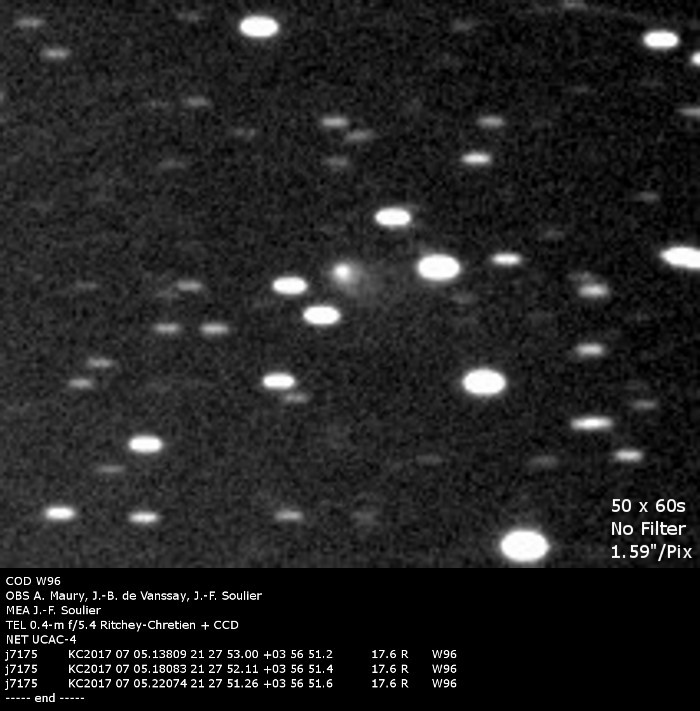
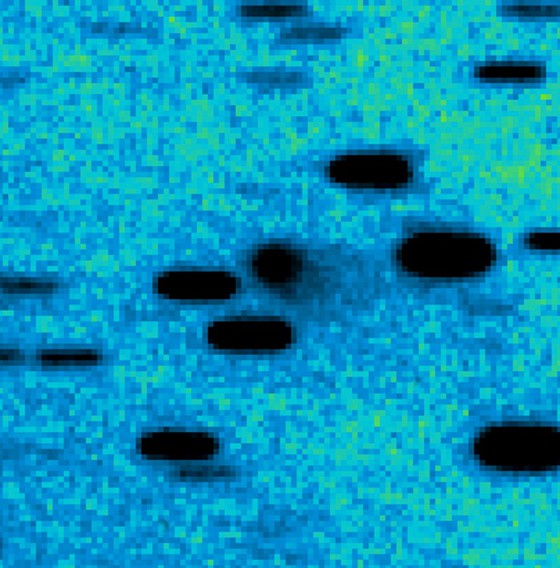
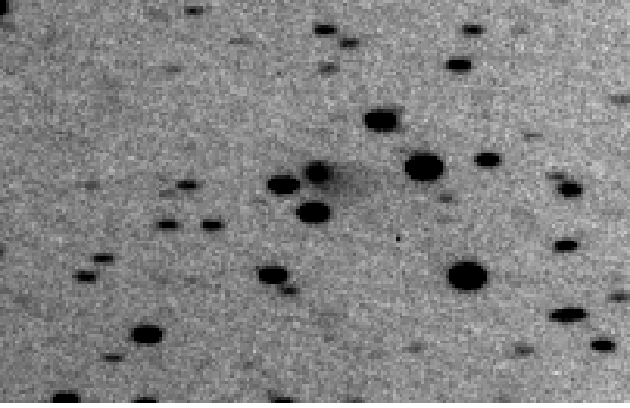
Animation : 2x(40x60s)
CTA _ 102 Quasar Outburst
Web Infos :
http://www.astronomerstelegram.org/?read=9821
http://www.aanda.org/articles/aa/pdf/2013/09/aa21784-13.pdf

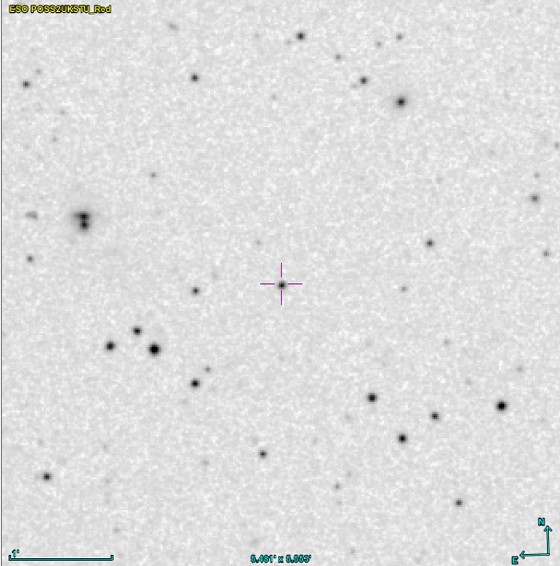
2015 TP-145 (K15TE5B)
Paper by G. Cannat : http://autourduciel.blog.lemonde.fr/2015/10/31/les-images-de-2015-tb145-lors-de-son-passage-a-proximite-de-la-terre/
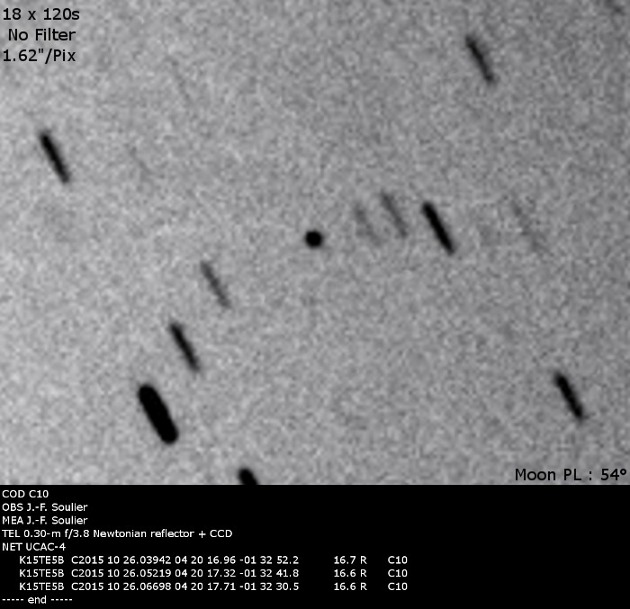
POSSIBLE OCTOBER 31 METEORS FROM MINOR PLANET 2015 TB_145
P. Jenniskens, SETI Institute and NASA Ames Research Center; and J.
Vaubaillon, Institut de Mecanique Celeste et de Calcul des Ephemerides, Paris,
report that the close approach to the earth (0.0033 AU) of 2015 TB_145 (cf.
MPEC 2015-T86), a possible dormant comet, is not expected to produce
associated meteors in 2015. From a model that evolves meteoroids ejected by
outgassing from this object since 1850, they calculated that meteoroids will
pass > 0.0007 AU outside of the earth's orbit on 2015 Oct. 31d17h05m UT
(between 15h and 19h UT). If, due to different ejection conditions or
physical properties than assumed in the model, associated meteoroids do cross
the earth's path, then meteors would radiate from geocentric position R.A. =
64.3 deg, Decl. = -3.0 deg (equinox J2000.0), with geocentric speed 34.8 km/s,
and would be best seen in Asia. The model calculates a strong potential past
shower outburst in 2009 between solar longitudes 217.85 and 217.99 deg
(equinox J2000.0), with peak at 217.91 deg, while weaker shower outbursts
may have occurred in 2013 and 2014. The SonotaCo meteoroid orbit survey
(Kanamori 2009, JIMO 37, 55; see website URL http://sonotaco.jp/) did not
cover the relevant time period in 2009, but the "Cameras for Allsky Meteor
Surveillance" program (CAMS; cf. Jenniskens 2011, Icarus 216, 40; see URL
http://cams.seti.org) did cover the period of expected activity in 2013 and
2014. No activity was observed in the presumed area of the sky. The model
predicts that the encounter in 2016 would be between solar longitude 217.75
and 218.04 deg (peak at 217.90 deg).
Also, the CAMS and SonotaCo video meteoroid orbit surveys (which
generally detect meteors in the magnitude range +4 to -2) did not detect a
meteor shower associated with 2015 TB_145 in the week centered on the
expected peak activity during 2007-2014.
NOTE: These 'Central Bureau Electronic Telegrams' are sometimes
superseded by text appearing later in the printed IAU Circulars.
(C) Copyright 2015 CBAT
2015
October 24
(CBET 4154)
Daniel W. E. Green
Je rappelle que :
"toutes les images et textes de ce site sont protégés
par les lois internationales sur le copyright
et ne peuvent être utilisés, sous
quelque forme que ce soit, sans une autorisation écrite de son auteur".
I recall that : "All images and text from my site are protected by international law
copyright and may not be used in any form whatsoever without
written permission of its author".